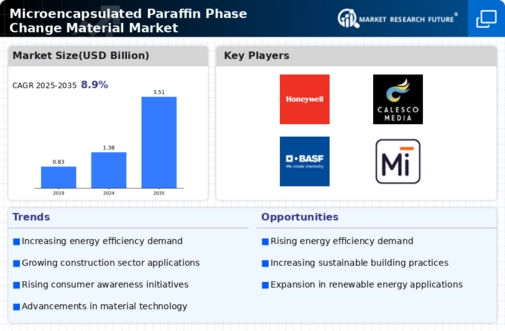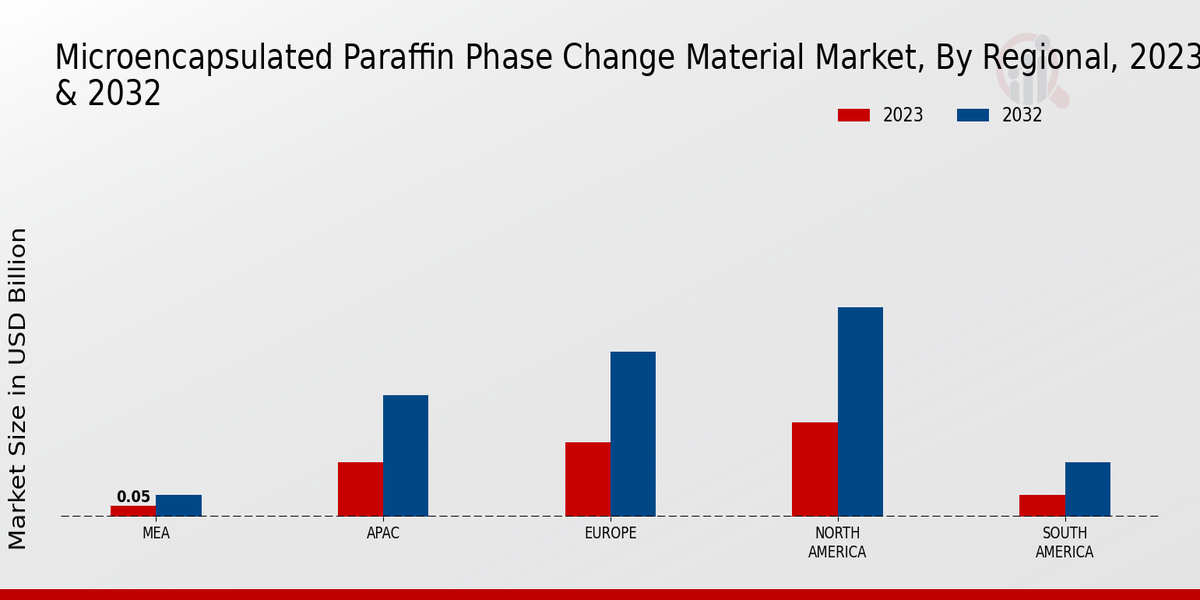Market Growth Projections
Growing Demand for Energy Efficiency
The Global Microencapsulated Paraffin Phase Change Material Market Industry experiences a notable surge in demand driven by the increasing emphasis on energy efficiency across various sectors. As industries and consumers alike seek to reduce energy consumption and costs, microencapsulated paraffin phase change materials offer an effective solution for thermal management. These materials can store and release thermal energy, thereby optimizing energy use in buildings and industrial applications. The market is projected to reach 1.38 USD Billion in 2024, reflecting a growing recognition of the benefits of energy-efficient technologies in mitigating climate change and enhancing sustainability.
Advancements in Building Technologies
Innovations in building technologies significantly contribute to the expansion of the Global Microencapsulated Paraffin Phase Change Material Market Industry. The integration of microencapsulated phase change materials in construction materials enhances thermal performance, leading to improved indoor comfort and reduced energy costs. For instance, the incorporation of these materials in wallboards and insulation systems allows for better temperature regulation. As building codes become increasingly stringent regarding energy efficiency, the demand for such advanced materials is likely to rise, positioning the market for substantial growth as it aligns with global sustainability goals.
Diverse Applications Across Industries
The versatility of microencapsulated paraffin phase change materials drives their adoption across various industries, thereby propelling the Global Microencapsulated Paraffin Phase Change Material Market Industry. These materials find applications in sectors such as construction, textiles, and electronics, where temperature regulation is crucial. For example, in the textile industry, they are utilized in smart clothing to provide thermal comfort. The expanding range of applications suggests a robust market potential, as industries increasingly recognize the benefits of integrating phase change materials into their products and processes, leading to enhanced performance and energy savings.
Rising Awareness of Sustainable Solutions
The Global Microencapsulated Paraffin Phase Change Material Market Industry benefits from a growing awareness of sustainable solutions among consumers and businesses. As environmental concerns escalate, stakeholders are increasingly seeking materials that minimize ecological footprints. Microencapsulated paraffin phase change materials, known for their ability to enhance energy efficiency and reduce reliance on fossil fuels, are gaining traction. This trend is further supported by government initiatives promoting sustainable building practices and renewable energy sources. The market's trajectory is expected to reflect this shift, with projections indicating a growth to 3.51 USD Billion by 2035.
Supportive Government Policies and Regulations
Supportive government policies and regulations play a pivotal role in shaping the Global Microencapsulated Paraffin Phase Change Material Market Industry. Governments worldwide are implementing regulations aimed at promoting energy efficiency and reducing greenhouse gas emissions. These policies often encourage the adoption of advanced materials, including microencapsulated phase change materials, in construction and manufacturing. As a result, businesses are incentivized to invest in these technologies, fostering market growth. The anticipated compound annual growth rate of 8.85% from 2025 to 2035 underscores the potential for expansion driven by favorable regulatory environments.






